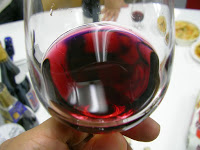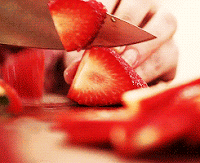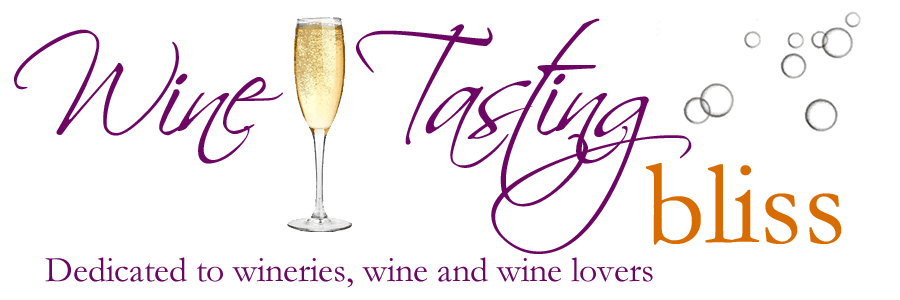I love drinking wine! The beautiful colors, the complex layers of flavor, the aromas… oh, the aromas. To my surprise, the amazing wine aromas have never been captured in a perfume. That’s probably a good thing, otherwise I might never leave home. So what is it about the “nose” of wine that makes it such a critical part of our enjoyment?
They say that we first taste with our eyes, then with our nose, and finally with our tongue. This is certainly true with wine. After appreciating the color and clarity of the wine, we next savor the aromas. This is where a proper glass can really help. It isn’t just marketing hype, scientists have actually measured the aroma distribution at the top of various wine glasses and they found that the glasses widely judged to provide a better experience actually do present aromas more completely. Wow, for once science backs up the hype! It makes sense to spend a bit on your wine glass if you are going to spend a bit on your wine. The better the wine, the better the glass, right?
 |
| I have 10X your scent receptors |
Our nose is an amazing organ. It has about 10,000,000 sensory cells, divided between two nostrils. Did you know that you use one nostril at a time? Even more surprising is the recent discovery that we switch between nostrils in something called the Nostril Cycle. This cycle runs between 40 minutes and several hours, getting longer as we age. Our nostrils are also unique, so each nostril reports smells slightly differently. That, coupled with rotating nostril dominance, explains why the same smell reports differently at different times.
One of the wonderful things about wine is the amazing variety of aromas produced! Smells trigger powerful memories and associations, so a slight whiff of a certain wine can take us back to a moment long buried in our memory.
When speaking about wine aromas, the only limitation is your imagination! Does that wine REALLY smell like a cigar? Or a wet dog? How does grape juice develop aromas of grapefruit or apples? There’s a lot going on here, so how does it happen?
 |
| Aromas are leaping toward your nose! |
Those little atoms of hydrogen, carbon, nitrogen and oxygen bond madly with each other, following those rules that put us to sleep in chemistry class. These combinations form acids, sugars, alcohols and phenols, and some of them fling themselves out of the wine into the air. The makeup of the wine dictates which compounds are produced, and therefore its unique aromas.
 Does the wine smell faintly floral, reminiscent of tulips or roses? That’s due to monoterpenes. How about grassy or herbaceous? That’s methoxypyrazine at work. Those spicy notes? Credit goes to norisoprenoids. Why didn’t we cover this in chemistry class? Attention would have gone WAY up!
Does the wine smell faintly floral, reminiscent of tulips or roses? That’s due to monoterpenes. How about grassy or herbaceous? That’s methoxypyrazine at work. Those spicy notes? Credit goes to norisoprenoids. Why didn’t we cover this in chemistry class? Attention would have gone WAY up!
You don’t hear much chemistry discussed in the tasting room. Instead you hear words like “honeysuckle” and “cut grass” or maybe “black pepper” and “chocolate”. Clearly, the wine doesn’t contain any of these things, just evocative aromas.
 So how do we decode these labels? Most wine reviews use a limited set of descriptors for the aroma. Learning just a few “generally accepted” reference aromas can help you understand others and express your observations in terms others will recognize.
So how do we decode these labels? Most wine reviews use a limited set of descriptors for the aroma. Learning just a few “generally accepted” reference aromas can help you understand others and express your observations in terms others will recognize.
Are you smelling herbal aromas? Some typical associations are licorice, mint, tea or pepper. Even more fun are the grassy associations: hay, mown grass, forest floor. Are there fruit notes (beyond grape, of course)? Think about your nasal memory of apple, melon, strawberry, cherry, raspberry, lemon or plum. What about leather, tobacco, chocolate or butter? Are these aroma references in the wine?
Using these descriptors lets wine tasters share a common vocabulary, saving time for the really important work of actually tasting the wine! Cheers!
Oh, yeah, did I forget your favorite wine aroma? Leave us a comment with your list!
About the Author: John grills a mean steak and is always in the market for another wine fridge. Believes that if a winery has more than 10 employees, it's probably too big. Buys wine faster than he drinks it, but who cares?





My favorite? Skunk cabbage! Was actually told that by a wine steward as a good thing!
Yuck! In what world is it desirable to drink something that smells of skunk cabbage. Sounds like the wine was corked and they didn't want to throw it away. "I know, I'll act like it's something special!"